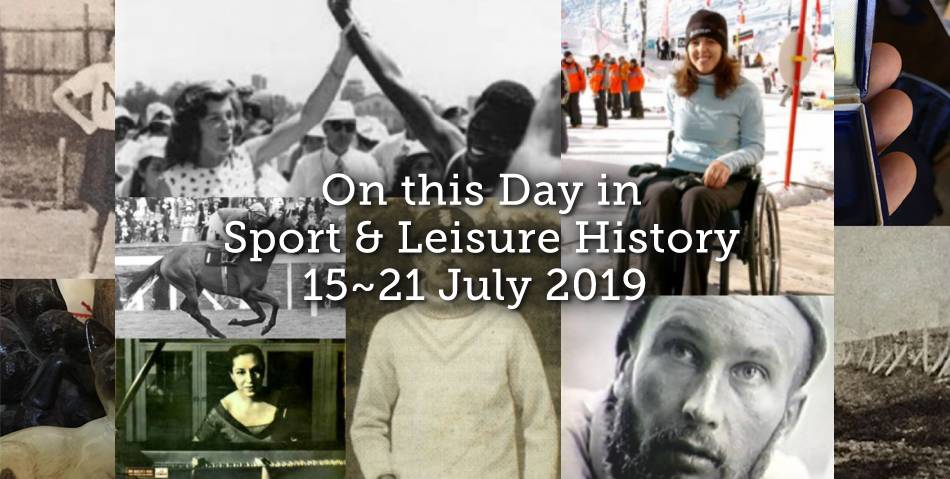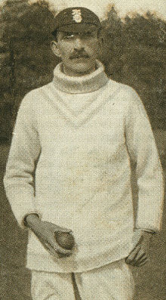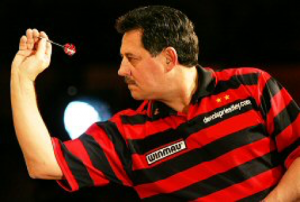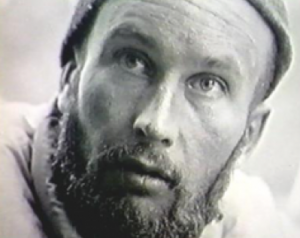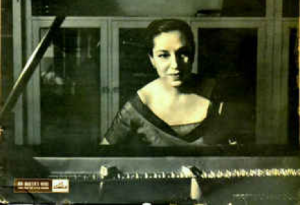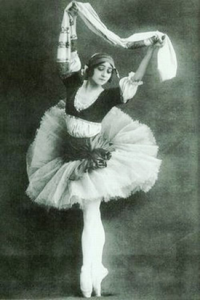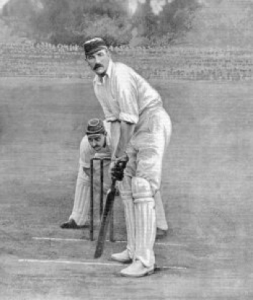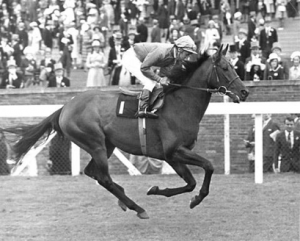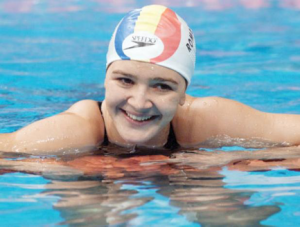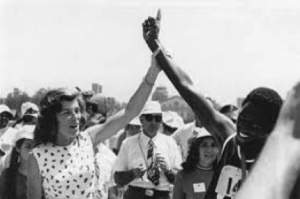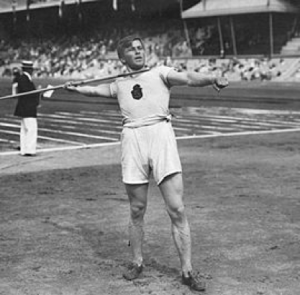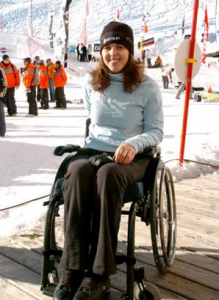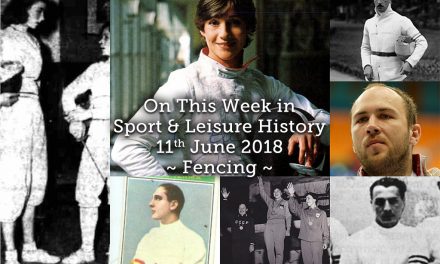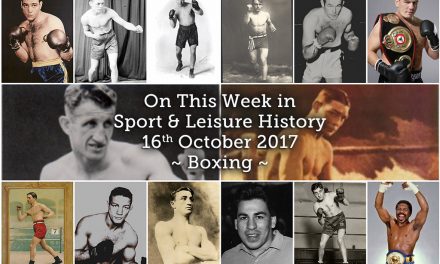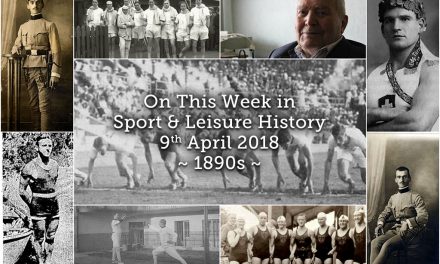15th
- On this day in 1815 the first flat horse race was held at an English race track – Cheltenham on Nottingham Hill.
- British racing driver Ian Stewart was born on this day in 1929. Stewart was regarded by Jim Clark as a highly-strung individual who “at the wheel was as relaxed as anyone”. His only appearance in a World Championship Grand Prix came at the 1953 RAC British Grand Prix, in which – due to ignition failure – he failed to finish in his Ecurie Ecosse-entered Connaught-Lea Francis A. Stewart’s main competition was as part of the Jaguar racing Ecurie Ecosse team. Stewart made a name for himself racing a Jaguar XK120 in British national events, winning 23 races in just three seasons, including the Jersey International and the Wakefield Trophy. He was a founder member of Ecurie Ecosse who adopted the colour he had resprayed his XK120 as their team colour, he was also responsible for their distinctive badge. During this period, he was one of three Ecurie Ecosse drivers for the team’s debut race at Charterhall, which resulted in a second place for Stewart. It was with the Merchiston team that Stewart won most of his races. This success led to some works outings for the Jaguar marque at Le Mans. It is often said that during the 1954 Les 24 Heures du Mans he rolled an Aston Martin DB3S on the fast stretch between Arnage and White House corners; that however was Jimmy Stewart, Jackie’s older brother. Ian had already retired from racing following a crash in the 1954 Argentinian 1000k sports car race to tend to his family’s agricultural and public house businesses in Perth and Kinross.
- Cricketing history was made at Colchester in 1938 when Arthur Fagg scored an unbeaten 202 not out in Kent’s second innings against Essex. He had already made 244 in the first innings and is the only man to score double centuries in both innings of a first-class match.
- Surrey slow bowler, Razor Smith (William Charles Smith); died on this day in 1946. Nicknamed “Razor” because of his extreme thinness, Smith was prone to serious injury and could rarely get through a full season’s cricket, but when sound, could command the sharpest off-break among bowlers of his day. He was also able to bowl a somewhat faster ball with a very high flight that turned a little from leg and, with any help from the pitch, would get up almost straight. Smith was discovered by the great W.G. Grace in the late 1890s and recommended immediately to Surrey, where he had already taken up residence. He took 5 for 50 against a weak Derbyshire side on his County Championship debut in 1900, but played little first-class cricket until 1904. He proved unplayable on wet wickets early in the season, but did nothing when the weather turned dry and was quickly dropped until the last two games. Still, Smith was third in the first-class averages in his first full season. In 1905, he first came to the public eye with a surprising performance against the Australians on a dry pitch at the Oval, in which his fine off-break made him for a time irresistible, and an amazing 7 for 11 against Northamptonshire on a really sticky pitch. It was in 1910 that “Razor” reached the zenith of his fame: his 247 wickets was 72 ahead of his nearest rival and cost only fractionally more than in 1909. With many soft wickets, Smith was frequently unplayable, and the amount of work he got through seemed to shatter thoughts his body was fragile. His success was due in part to a new delivery, a fast kicking leg break in addition to his usual sharp off spinner. Many of his wickets came courtesy of the brave close fielding of Bill Hitch at short leg. Smith took 14 for 29 at the Oval against Northamptonshire, doing the hat-trick in the second innings and being denied one in the first by a dropped catch. In 1911, despite most pitches being totally unhelpful in an exceptionally dry summer, Smith seized his few chances so well that he was second highest wicket-taker in the country with 160. 1912 was a wet summer that suited Smith’s bowling, yet prior to the last three games he had been so out of form – bowling when clearly unfit – that he had the poor record of 69 wickets at 21.43 each. Deadly bowling in the last three games improved his record, yet he was a complete failure (aside from his only first-class century at No. 11) on an MCC tour of the West Indies. 1913 was basically a repeat of 1912 – “Razor” came into form only at the tail end of the season – and in 1914 Smith could rarely play due to injuries continuing to recur. After World War I, it was clear “Razor”’s body would not allow him to play more cricket, and he spent the rest of his life working for the bat firm Surridge’s. Smith worked there right up until his death from heart failure.
- Today in 1949 Czech tennis stars Jaroslav Drobny & Vladimir Cernik defect to USA.
- In 1961 Arnold Palmer took the 90th British Open Golf title after shooting a 284 at Royal Birkdale.
- Michelle Jan Ford, Australian long distance freestyle and butterfly swimmer was born in 1962. She won a gold medal in the 800m freestyle, bronze in the 200m butterfly, and 4th in the 400m freestyle at the 1980 Olympics in Moscow. She was the only non-Soviet bloc female swimmer to win an individual gold medal at the 1980 games. She also set two world records in her career, and was the first Australian woman to win individual Olympic medals in two distinct specialized strokes.
- On this day in 1970 Denmark beat Italy 2-0 in 1st world female football championship, this competition was a non-FIFA-sanctioned tournament in which seven teams appeared: England, West Germany, Denmark, Mexico, Italy, Austria and Switzerland, an eighth team, Czechoslovakia, withdrew. The crowds for the tournament were “30,000-strong”. The tournament was followed by the 1971 Women’s World Cup, and “the series of Mundialito tournaments throughout the 1980s in Italy, and Fifa’s Women’s Invitation Tournament in China in 1988” before the first official Women’s World Cup in China in 1991.
- At Royal Birkdale in 1983 Dennis Durnian established a record score for nine holes in the British Open when he shot a 28 in the second round.
- Veronika Velez-Zuzulová (née Zuzulová) was born in 1984; the Slovakian World Cup alpine ski racer was born in Bratislava.She specialises in the slalom and is the most successful Slovak alpine skier in recent years. She is coached by her father, Timotej Zuzula, and Vladimír Kovár. She started skiing at age 3 and at 14 she won the Trofeo Topolino in Italy, an unofficial children’s world championship.
- Laurie Cunningham, the second black footballer to play for England after Viv Anderson, was killed in a car crash near Madrid in 1989, aged 33. Cunningham made his name with Leyton Orient and West Bromwich before moving to Spanish club Real Madrid.
- In 1991 Sandhi Ortiz-DelValle becomes the first woman to officiate a men’s pro basketball (USBL) game. The game was between New Haven Skyhawks & Philadelphia Spirit.
- Lithuanian basketball player Justinas Lagunavičius died on this day in 1997, he competed for the Soviet Union in the 1952 Olympics, in which the team took the silver medal, he played in five matches during the tournament.
- In 2013 18 people are killed and 47 are injured in a riot following a boxing match in Indonesia
- Razor Smith
- Veronika Velez-Zuzulová
16th
- Born on this day in 1871 was American golfer John Maxwell. In 1904, Maxwell was part of the American team which won the silver medal at that year’s Olympics. He finished 21st in the competition. Maxwell won the inaugural Iowa Amateur in 1900 and the Trans-Mississippi Amateur in 1903 and was inducted into the Iowa Golf Hall of Fame in 2011.
- In 1895 Archie MacLaren of Lancaster completed the highest innings in first-class cricket in Britain and, at the time, in the world. MacLaren took seven hours and 50 minutes to complete his record-breaking innings of 424, against Somerset at Taunton.
- Today in 1896 saw the Test Cricket debut of K S Ranjitsinhji, against Australia at Old Trafford. The controversy over his non-selection for the previous test at Lord’s was to end the practice of England teams being selected by the host club for the match rather than centrally appointed selectors.
- In 1910 John Robertson Duigan mad the first flight of the Duigan pusher biplane, the first aircraft built in Australia.
- Polish Alpinist, Mountaineer and pioneer of winter Himalayism Andrzej Zawada, was both in 1928.He was the organiser and leader in numerous high-mountains expeditions, author of movies and photographs from expeditions, co-author of Alpinist books, honorary member of the British Alpine Club, French Groupe de Haute Montagne and American The Explorers Club. Amongst climbers he is known for his phrase: “Tell me, what you did in the winter in the Tatras, and I’ll tell you what you’re climber”.
- Australian tennis player Margaret Court was born in 1942. She won more Grand Slam titles, 66, than any other player. Her total includes 26 singles titles. She has recently been strongly criticised after writing a letter to The West Australian decrying Qantas airlines for being a corporate supporter of same-sex marriage and claiming she would boycott the airline. The letter, and further follow-up interviews, again led to calls from some Australians and tennis players to rename the Margaret Court Arena. Some politicians, including Prime Minister Malcolm Turnbull, rejected calls for the change of name, saying the name “celebrates Margaret Court the tennis player.”
- The final match of the 1950 FIFA World Cup final between Uruguay and Brazil at the Maracana Stadium in Rio de Janeiro, was watched by 199,854 people, although the paying audience numbered only 172,772.
- Dennis Priestley, British Darts player, was born on this day in 1950. He has won two world championships, and was the first player to win both the BDO and WDC (now PDC) world championships, in 1991 and 1994 respectively. He is nicknamed “The Menace”, after the cartoon character Dennis the Menace, and reflects this by wearing red and black, and using red and black flights.
- J D Salinger published his novel “Catcher in the Rye” on this day in 1951.
- Today in 1956 Ringling Bros. and Barnum & Bailey Circus closed its last “Big Tent” show in Pittsburgh, Pennsylvania; due to changing economics all subsequent circus shows would be held in arenas.
- In 1960 205,000 (a then record sports attendance) watched the Brazil-Uruguay World Cup match.
- Today in 1961 Ralph Boston of US, set a then long jump record at 27′ 2″.
- Spanish road racing cyclist, the winner of five consecutive Tours d France (1991-1995) Miguel Indurain Larraya, was born in 1964.He won the Giro d’Italia twice, becoming one of seven people to achieve the Giro-Tour double in the same season. He wore the race leader’s yellow jersey in the Tour de France for 60 days. Since the revoking of Lance Armstrong’s seven wins; he now holds the record for the most consecutive Tour de France wins and shares the record for most wins with Jacques Anquetil, Bernard Hinault and Eddy Merckx. Indurain’s ability and physical size; 1.88m (6ft 2in) and 80kgs (176lb)—earned him the nickname “Miguelón” or “Big Mig”. He was the youngest rider ever to win the Spanish amateur national road championship, when he was 18, at 20 the youngest rider to lead the Vuelta a España, and at 20 he also won a stage of the Tour de l’Avenir. Indurain aimed for a sixth victory in the 1996 Tour, but suffered from the beginning. He came seventh in the prologue. After bronchitis in a cold and wet first week, he lost time from stage seven, eventually finishing the Tour in 11th place. He won the individual time trial in the 1996 Olympic Games in Atlanta, where professionals competed for the first time. In September 1996 Indurain rode the Vuelta a España at the insistence of his team. He dropped out unexpectedly on the Mirador del Fito, 30km (19miles) from the end of the stage to Covadonga. Relations with his team manager, José-Miguel Echavarri, had been difficult since an aborted attempt on the hour record in Colombia in October 1995. The two no longer speak. Indurain took two months to consider his future, particularly the €4.5million that Manolo Saiz was said to have offered him to transfer to the ONCE team. Negotiations foundered over which races Indurain would ride and whether Saiz would pay more. However, on 1 January 1997 he told 300 journalists and others in the El Toro hotel in Pamplona that he would not race again. “This is a long and deeply meditated decision, especially as physically I’m in condition to win a sixth Tour”, he said. “In early 1996 I decided it was time to go, and I tried to win the Tour for the last time. When I didn’t, I thought the Olympics would be the perfect way of bowing out, but what happened after the Tour of Spain made me change my mind. Every year it gets harder and I think I have spent enough time in the sport. My family are waiting.” After reading a prepared 30-line statement, he left without taking questions. Indurain now lives near Pamplona; he founded the Miguel Indurain Foundation in 1998 to promote sport in his home region of Navarra. He worked with the Spanish Olympic Committee to promote Sevilla’s candidature for the 2004 Olympics, and the Union Cycliste Internationale. He continues to ride a bike three or four times a week. He attends cyclotourist events such as L’Étape du Tour, the Mallorca312 and the Cape Argus Pick & Pay Cycle Tour in Cape Town, South Africa.
- The British Lions suffered their biggest defeat ever in 1983 when beaten 38-6 by the All Blacks in Auckland.
- Today in 1988 Jackie Joyner-Kersee set a then women’s heptathlete record of 7,215 pts.
- Brazil, the one-time giants of world football, beat Uruguay 1-0 in the final of the 1989 South American Championship. Remarkably, it was their first major title since the 1970 World Cup win.
- On this day in 1995 the 50th US Women’s Open Golf Championship won by Annika Sorenstam.
- Caterina Bueno, Italian singer and folk music historian, died on this day in 2007 at the age of 64. Starting in the 1960s, her research and performances of Italian folk songs, particularly those of Tuscany, are credited to bringing a new awareness of Italian folk music. Bueno was born in San Domenico di Fiesole to her Spanish father, painter Xavier Bueno, and Swiss mother, the writer Julia Chamorel. She taught herself to play the guitar and collected folk records, generally of Tuscany origin. She became active at the l’Istituto Ernesto De Martino and later the magazine Nuovo Canzoniere Italiano. She has worked with many artists in her career including Francesco De Gregori who dedicated his song “Caterina” to her.
- Dennis Priestley
- Caterina Bueno
17th
- On this day in 1882, 1885 & 1886, William Renshaw won the Wimbledon Men’s Tennis finals, beating E Renshaw (6-1 2-6 4-6 6-2 6-2), H Lawford (7-5, 6-2 4-6 7-5) and (6-0 5-7 6-3 6-4) respectively.
- Today in 1893 Arthur Shrewsbury became the first man to score 1,000 runs in Test Cricket.
- Louis Lachenal, French mountaineer was born today in 1921. He was one of the first two mountaineers to climb a summit of more than 8000m. On 3 June 1950, along with Maurice Herzog, he reached the summit of Annapurna I in Nepal at a height of 8091m (26,545ft). Previously he had made the second ascent of the North Face of the Eiger in 1947, with Lionel Terray. He died falling into a snow-covered crevasse while skiing the Vallee Blanche in Chamonixin 1955. The mountain Pointe Lachenal in the Mont Blanc massif was named after him.
- The 21st Tour de France was won by Nicolas Frantz of Luxembourg today in 1927.
- The former Derbyshire and England wicket-keeper Bob Taylor was born in 1941. He kept wicket 57 times for England and dismissed 174 batsmen. His total of 1649 dismissals is one of the highest in first-class cricket. Against India in 1980 he equalled the then Test record with seven dismissals (all caught) in one innings.
- The opening ceremony of the 21st Olympic Games in Montreal was marred by the withdrawal of 25 African countries on this day in 1976. They were all protesting at New Zealand’s sporting links with South Africa. The International Olympic Committee’s refusal to ban New Zealand, whose rugby team was touring South Africa, resulted in the boycott. South Africa had been banned from the Olympics since 1964 for its refusal to condemn apartheid. A spokesperson for the New Zealand Olympic Committee said the All Blacks tour of South Africa had been arranged by the New Zealand Rugby Union which was an autonomous body and nothing to do with the Olympics. He said it was illogical to single out New Zealand as it was one of 26 countries to have played sport in South Africa during the past year. Countries protesting at New Zealand’s participation in the Games continued to withdraw throughout the opening days. Egypt did not take part in the opening ceremony without formally announcing its withdrawal. Taiwan withdrew on the grounds that the Canadian government refused to allow her to compete under the name of the Republic of China. Egypt subsequently withdrew and the final number of absences was 33. In the first two days of the Games a million Canadian dollars was reputedly lost in event cancellations and seat refunds. South Africa was banned from the Olympics until 1992 when apartheid laws were repealed in the country. Britain came home from the Montreal Olympics with just one bronze medal in the track and field events. But swimmer David Wilkie gave Britain her first men’s swimming gold medal in 68 years and also took the world record. Nadia Comaneci of Romania, 14, took over the mantle of best gymnast in the world from Olga Korbut, after winning the first maximum score of 10.00 in Olympic history. She went on to win three gold medals.
- Sebastian Coe first broke the mile record at Oslo in 1979, knocking four-tenths of a second off John Walker’s four-year-old record to set a new time of 3:48.95s. Exactly four years earlier in 1975, Coe had first run a sub-four minute mile.
- American pianist and harpsichordist Rosalyn Tureck died on this day in 2003 aged 88. She was was particularly associated with the music of Johann Sebastian Bach. However, she had a wide-ranging repertoire that included works by composers including Ludwig van Beethoven, Johannes Brahms, and Frédéric Chopin, as well as more modern composers such as David Diamond, Luigi Dallapiccola, and William Schuman. Diamond’s Piano Sonata No. 1 was inspired by Tureck’s playing. After her death her scores and recordings were given to the Music Division and the Rodgers & Hammerstein Archives of Recorded Sound, both divisions of The New York Public Library for the Performing Arts.
- On this day in 2005, Tiger Woods shot a 274 at St Andrews to win the 134th British Open, his tenth major, and thus became only the second golfer, after Jack Nicklaus, to win each Major more than once.
- Owen Chadwick, one of the great religious historians of our time died on this day in 2015 aged 99. Remarkable for the wide variety of subjects, he wrote extensively on Christianity and the nature of religion but on many other topics too, including biography and general history. He was educated at Tonbridge School, where he became captain of the rugby team. He continued playing rugby at Cambridge University and was captain in his third year. He joined an informal Lions team which toured Argentina in 1936, winning all their 10 games, including a 23-0 victory against the Argentinian national side, in which Chadwick played in his favoured position as hooker. Interviewed in 2008, a remark he made about his time as a rugby player hints at his approach to academia as much as to sport: “In the scrum you can do your good anonymously, with no sense of display on the field where people could watch you doing noble things…”
- Louis Lachenal
- Rosalyn Turec
18th
- One of the most celebrated of all British sportsmen, William Gilbert ‘WG’ Grace, was born in 1848. Unquestionably one of cricket’s great characters, ‘The Doctor’ – Grace qualified as a GP – was an outstanding all-rounder, he scored 54,896 runs, and took 2876 first-class wickets and 871 catches. In 1876 he became the first man ever to score 300 runs in an innings; and for good measure, he performed the feat twice in a week! He spent most of his career with his home county, Gloucestershire. Also a keen lawn bowler, playing for England at international level, he formed the English Bowling Association in 1903 and was its president until 1905. He retired from first-class cricket at the age of 60, in 1908, and died in 1915.
- Today in 1862 the first ascent of Dent Blanche was made. Dent Blanche is one of the highest mountains in the Pennine Alps and lies in Switzerland, at 14,291 feet high. TS Kennedy and William Wigram, along with Jean-Baptiste Croz and Johann Kronig as guides, were the climbers who made this historical ascent.
- On this day in 1893 Australian Harry Graham scored 107 on his cricket debut – Australia v England at Lord’s.
- Russian ballerina Olga Alexandrovna Spessivtseva was born today in 1895, her stage career spanned from 1913-39. One of the maxims prima ballerinas of the twentieth century, with excellent classical technique, immaculate style and scenic spirituality, considered the embodiment of the romantic ballerina.
- Today in 1896 George Giffen becomes the first man to complete 1000/100 cricket double.
- The youngest known female Olympic Games medallist in an individual event, Danish swimmer Inge Sørensen was born on this day in 1924. She won the bronze medal in the 200m breaststroke at the 1936 Olympics at the age of 12 years and 24 days. During 1936-1944 she won nine Danish championships, two Nordic championships and one European championship. She set 14 Danish records in breaststroke. She also broke the world 400m and 500m breaststroke records and became the first Danish female swimmer under 3 minutes for 200m breaststroke. Her career was cut short by WWII after which Inge took up instructing and coaching in gymnastics and swimming. She married Danish engineer Janus Tabur in 1948 and together they moved to South Africa and later Canada and in 1951 the couple settled in New Jersey, USA, where Inge died at the age of 86 on 3rd March 2011.
- Australian athlete Shirley Strickland (later de la Hunty) was born in 1925. She won more Olympic medals than any other Australian in running sports. While teaching at Perth Technical College, she was coached by Austin Robertson, a former world professional sprint champion and South Melbourne footballer. She improved her 100yds time from 11.8 to 11.0 flat. At the 1947 Western Australia state titles, she won the 100yds, 220yds, 440yds, the 90yds hurdles and the shot put. The following year, she took up running seriously, with great success. She won the national title in the 80m hurdles in 1948 and was part of the Australian delegation for the 1948 Olympics in London. There, Strickland finished third in both the 100m and 80m hurdles and won a silver medal in the 4×100m relay. Despite being awarded 4th place in the 200m final a photo finish of the race that was not consulted then, but discovered in 1975 showed that she had beaten American Audrey Patterson into third place, a discrepancy that has been recognised by many reputable Olympic historians. After winning three gold medals in the 1950 British Empire Games, she won her first Olympic title at the 1952 Games in Helsinki; she won the 80m hurdles in world record time (10.9s). A baton mix-up cost her a second gold in the 4×100m relay. In the 100m, she again won the bronze. She set a new world record of 11.3s for the 100m in Poland in 1955, and in the 1956 Olympics, she won again in the 80m hurdles and with the Australian 4×100m relay team. De la Hunty maintained her Olympic involvement, in athlete administration, with the Australian teams during the 1968 and 1976 Olympics in Mexico City and Montreal. She also coached sprinter Raelene Boyle for the 1976 Olympic season. De la Hunty was one of several female Australian Olympians who carried the Olympic Flag at the Opening Ceremony of the 2000 Sydney Games.Her father, Dave Strickland, was also an athlete. He was unable to compete in the 1900 Olympics because he lacked the money for a trip to Paris. Instead, in 1900, he directed his efforts to the Stawell Gift 130yd foot-race, winning in 12 seconds off a handicap of 10 yards. His performance was considered to be as good as those of Stan Rowley, who won the Australian amateur sprint titles that season. (Rowley went on to win three bronze medals in the sprints at the 1900 Paris Olympics). Dave Strickland subsequently went on to play one senior game of Australian Rules football with Melbourne-based VFL team St Kilda in 1900 and six with WAFL club West Perth spread across the 1901 and 1909 seasons.
- The 20th Tour de France won by Lucien Buysse of Belgium today in 1926.
- Athlete David Hemery was born in 1948. His brilliant world record run in the 400m hurdles at the 1968 Mexico Olympics won him the gold medal and also resulted in commentator David Coleman nearly losing his voice with excitement!
- Australian fast-bowler Dennis Lillee was born in 1949. His aggregate of 355 wickets in 70 Test matches was a record until surpassed by Ian Botham.
- ‘Jersey’ Joe Walcott knocked out Ezzard Charles in 1951 to become the oldest world heavyweight boxing champion at 37 years and 168 days.
- One of Britain’s most successful golfers of modern times, Nick Faldo, was born in 1957. Faldo was the first Briton since Henry Cotton in win the British Open three times, in 1987, 1990 and 1992. He alos emulated the great Jack Nicklaus in winning the US Masters in successive years, in 1989 and 1990.
- Today in 1976, at the Montreal Games,Nadia Comăneci becomes the first person in Olympic history to score a perfect 10 in gymnastics.
- Natalia Mikhailova, Russian ice dancer was born in 1986. With Arkadi Sergeev, she is the 2006 World Junior silver medallist.
- Fabio Casartelli, Italian cyclist and an Olympic gold medallist, died in a crash on the descent of the Col de Portet d’Aspet, during the 15th stage of the 1995 Tour de France, aged 24. Casartelli and a few other riders crashed on the descent of the Col de Portet d’Aspet in the Pyrenees. Casartelli’s head struck the concrete blocks along the roadway, causing severe head injuries and loss of consciousness. Doctors arrived within seconds While being flown to a local hospital by helicopter, Casartelli stopped breathing and after numerous resuscitation attempts he was declared dead. It has been argued that Casartelli would have survived if he had been wearing a bicycle helmet. Gerard Porte, the Tour’s senior doctor, claimed that protection was academic since the fatal blow was to an area of Casartelli’s head that would not have been covered by a helmet. However Michel Disteldorf, the French doctor who examined Casartelli’s body on behalf of the coroner in Tarbes, where the rider was flown by helicopter after he crashed, told the Sunday Times that the point of impact was on the top of the skull, and that had Casartelli been wearing a hard helmet “some injuries could have been avoided”.
- Olga Alexandrovna Spessivtseva
- George Griffen
19th
- Maurice Garin of France won the inaugural Tour de France in 1903.
- On this day in 1908 Feyenoord football team formed in Rotterdam.
- In 1942 German occupiers confiscated bicycles in Rotterdam & Hague.
- Andres Vooremaa, Estonian chess player was born in 1944. He twice won the Estonian Chess Championship and was awarded the Soviet Master title in 1969.
- Today in 1952 the 15th Olympic Games opened in Helsinki.
- Roger Binny, Indian cricket all-rounder was born in 1955, best known for his impressive bowling performance in the 1983 Cricket World Cup where he was the highest wicket-taker (18 wickets), and in the 1985 World Series Cricket Championship in Australia where he repeated this feat (17 wickets). He played 27 tests and 72 ODIs for India. Binny started his international career on his home ground, the M. Chinnaswamy Stadium in Bangalore, in the first Test of the 1979 home series against Pakistan. Against bowlers of the calibre of Imran Khan and Sarfraz Nawaz, he performed creditably in his debut match scoring 46 runs. His Test career was not stellar, but he and fellow Pace bowler Karsan Ghavri were helpful in getting the shine off the new ball before India’s famous spin bowlers (Bishen Singh Bedi, Chandrashekhar, Prasanna and Ventatraghavan) could take over. Binny and Ghavri (along with wicket keeper Syed Kirmani) were also credited with saving many test matches for India. When the top batting order collapsed, Binny could be counted to hold the batting down so as to avoid innings defeats or drag the match to a draw. Binny however came into his own in the World Cup. The wickets suited his medium-pace, and in tandem with Madan Lal, and led by the inspirational Kapil Dev, he helped India win their first World Cup title. He was the first Anglo-Indian to play cricket for India. His son Stuart is following in his footsteps and played state cricket for Karnataka. Roger Binny is currently serving as an Office Bearer at the Karnataka State Cricket Association (KSCA). He appeared as the in-house cricket expert for national news channel – NewsX, during the 2011 ICC Cricket World Cup. On 27 September 2012, Binny was appointed as one of the five members of the selection panel of the Board of Control for Cricket in India.
- At the Bogside race course in 1957 Alec Russell became the second man, after Gordon Richards in 1933, to ride all six winners at one meeting. His six winners were: Double-Up 2-5 fav, Cligarry 2-1 fav, Wage Claim 100-8, Courtlier 8-1, Newton 8-13 fav, and Roselime 11-8 fav.
- Born on this day in 1961, Soviet gymnast Maria Filatova, who competed at the 1976 and 1980 Olympics. Filatova began competing for the USSR junior team in 1974. In 1976 she placed fourth at the USSR National Championships and competed well in various international events. She was originally named as an alternate to the Soviet team at the 1976 Olympics in Montreal. However, during podium training, she received such a positive reaction from the crowd that she was added to the team. She shared in the team gold medal and was ranked ninth overall after the team competition. Because four of her teammates scored higher than she did and only three gymnasts per team were allowed to compete in the all-around, she did not advance to the AA finals in spite of her high placement. Following the Olympics and the retirements of several high-profile gymnasts, including Ludmilla Tourischeva and Olga Korbut, Filatova emerged as one of the leaders of the Soviet team. She won the World Cup in 1977 and 1978; the USSR Nationals in 1977, and the Riga International meet in 1977 and 1979. At the 1980 Olympics, she served as the lead-off gymnast on several events and contributed to the team’s gold medal. She continued to the 1981 World Championships, where she was the silver medallist in the all-around. British journalist David Hunn referred to Filatova as a “fifteen-year-old in the Korbut tradition.” As Korbut, Filatova was known for her enthusiastic, expressive floor exercise routines and her difficult acrobatic skills. She was one of the first female gymnasts to successfully compete a double back somersault on floor in 1975. Following her retirement in 1982, Filatova worked for several years with the British Gymnastics Federation (in Belfast) before moving to the United States. She now lives and coaches in Rochester, NY.
- Today in 1980 the 22nd Olympic Games opened in Moscow; the USA, among other countries boycotted the Games.
- On this day in 1981, the 110th British Golf Open was won by Bill Rogers who shot a 276, at Royal St George.
- Romanian Olympic swimmer and national record holder Diana Mocanu was born on this day in 1984. She swam for Romania at the 2000 Olympics, where she won the 100m and 200m backstroke, both in Romanian national records. She also won the 200m backstroke at the 2001 World Aquatics Championships.
- Today in 1992 the 30th Tennis Fed Cup was held in Frankfurt, Germany beating Spain.
- Ian Botham played his last day of first-class cricket today in 1993.
- The 26th Olympic Games opened in Atlanta, Georgia today in 1996.
- Henry John Surtees, British racing driver and the son of John Surtees, died today in 2009 aged 18, during a Formula Two race at Brands Hatch. Surtees was hit on the head by a wheel from the car of Jack Clarke after Clarke spun into the wall exiting Westfield Bend. The wheel broke its tether and bounced back across the track into the following group of cars and collided with Surtees’ helmet. The mass of the wheel assembly hitting his head was 29 kilograms (64lb), but given the speed of his car (approximately 162km/h) at the time the wheel struck, the impact yielded approximately 60,000 joules of kinetic energy. The car continued straight ahead into the barrier on the approach to Sheene Curve, also losing a wheel, and came to rest at the end of the curve with its remaining rear wheel still spinning. This indicated that Surtees had lost consciousness, with his foot still pressing the accelerator. Surtees was extricated from the car and taken to the circuit’s medical centre, where he was stabilized before being transferred to the Royal London Hospital. He was pronounced dead later that day. In June 2010, a group of Surtees’ school friends swam the English Channel in stints to raise money for charity in his memory.
- Phil Woosnam, Welsh footballer and manager, native of Caersws in Powys, died on this day in 2013 aged 80. Woosnam played for five clubs in England and one in the United States. He played international football for Wales and was described as a “gifted inside-forward with a pronounced football intelligence”. He was Commissioner of the North American Soccer League from 1969–83, overseeing the league’s expansion and boom years. He was inducted into the U.S. National Soccer Hall of Fame In 1997. Woosnam, a cousin to golfer Ian Woosnam and a nephew of the English footballer, Max Woosnam, became a naturalized American citizen.
- Alec Russell
- Diana Mocanu
20th
- The idea of a Football Association Challenge Cup competition was first mooted, it is alleged, by Charles Alcock, secretary of the FA at a meeting in 1871.
- Fourteen years to the day after their first meeting, in 1885, the Football Association legalized professionalism. Many clubs, notably Preston North End, admitted they had been paying their players.
- Today in 1893 the 10th Wimbledon Women’s Tennis final was won by Lottie Dod who beat Blanche Bingley (6-8 6-1 6-4).
- Maurice Leyland, English cricketer was born in 1900; he played 41 Test matches between 1928 and 1938. In first-class cricket, he represented Yorkshire between 1920 and 1946, scoring over 1,000 runs in 17 consecutive seasons. A left-handed middle-order batsman and occasional left-arm spinner, Leyland was a Wisden Cricketer of the Year in 1929.
- On this day in 1919 Sir Edmund Percival “Ed” Hillary, a New Zealand mountaineer, explorer, and philanthropist was born. On 29 May 1953, Hillary and Nepalese Sherpa mountaineer Tenzing Norgay became the first climbers confirmed to have reached the summit of Mount Everest. They were part of the ninth British expedition to Everest, led by John Hunt. TIME magazine named Hillary one of the 100 most influential people of the 20th century. Hillary became interested in mountaineering while in secondary school. He made his first major climb in 1939, reaching the summit of Mount Ollivier. He served in the Royal New Zealand Air Force as a navigator during World War II. Prior to the 1953 Everest expedition, Hillary had been part of the British reconnaissance expedition to the mountain in 1951 as well as an unsuccessful attempt to climb Cho Oyu in 1952. As part of the Commonwealth Trans-Antarctic Expedition he reached the South Pole overland in 1958. He subsequently reached the North Pole, making him the first person to reach both poles and summit Everest. Following his ascent of Everest, Hillary devoted most of his life to helping the Sherpa people of Nepal through the Himalayan Trust, which he founded. Through his efforts, many schools and hospitals were built in Nepal.
- On this day in 1920 Heerenveen football team was formed.
- Today in 1938 Finland was awarded 1940 Olympic Games after Japan withdrew.
- The former Liverpool and England striker Roger Hunt was born in 1938. Liverpool’s all-time record goal scorer with 245 league goals, until surpassed by Ian Rush in 1992, he appeared for England in the 1966 World Cup final and in 34 games for England he scored 18 times.
- Emil Zatopek of Czechoslovakia won the 10,000m at the 15th Olympic Games in 1952. The 30-year-old Czech led from the start followed in close second by Alain Mimoun of France. Soon Zatopek unleashed an extra reserve of energy surging ahead of the other runners and only Mimoun could keep up with him. But on the 21st lap, Mimoun was left nearly half a lap behind as Zatopek, running with his characteristic pained facial expression and flailing arms, sped to the finish line.His winning time of 29 minutes, 17 seconds broke the Olympic record he had set in London in 1948 by more than 40 seconds. That year he also won silver in the 5,000m. Emil Zatopek, nicknamed “the Czech locomotive”, continued to dominate Helsinki. Within eight days he had won three golds – for the 10,000m, 5,000m and the marathon – a feat never achieved before or since in history of Olympic track and field. What was more remarkable was that he had never run a marathon before Helsinki and took it in an Olympic record time of 2hrs 23mins 03.2secs.
- Tennis champion Maureen Connolly’s right leg was crushed in an accident today in 1954.
- Top Table Tennis player Desmond Douglas was born in 1955. He won a record 25 English national titles between 1976 and 1990.
- Today in 1968 Eunice Kennedy Shriver launched the Special Olympic Games. Eunice was the sister of John, Edward (Ted), and Robert Kennedy. Their sister, Rosemary, was severely and permanently intellectually impaired after a lobotomy. Eunice was married to Robert Shriver, a US Ambassador to France and founder of the Peace Corps. (Their daughter, Maria, was married to then-governor of California, Arnold Schwarzenegger). In 1962 Eunice started a day camp for intellectually impaired children. Camp Shriver was located at her home in Potomac, Maryland. The goal was to provide a safe environment for children to participate in physical activities as well as to compete with their peers. Camp Shriver was sponsored by the Kennedy Foundation where she was the Executive Vice President. The Foundation also gave grants to universities, recreation departments, and community centres to hold similar events. Anne McGlone Burke was a physical education teacher with the Chicago Park District. She wanted to create a one-time event for an Olympic-style competition for people with special needs. She approached Shriver and was given a grant for $25,000. The first Special Olympics were held at Soldier Field in Chicago. There were attendees from 26 US states and Canada. The children competed in a variety of track and field events as well as in swimming. Shriver took the one-time event from Soldier Field and turned it into an annual event and the Special Olympics were born. The first International Special Olympics Winter Games were held in February 1977. Steamboat Springs, Colorado was the hosting city. In 1988 the Special Olympics were recognized by the International Olympic Committee and is the only sport organization authorized by the IOC to use the term “Olympics” in the title. In 2003, the Summer Games were held outside the US for the first time when Dublin, Ireland hosted them.
- The 30th US Women’s Open Golf Championship was won today in 1975 by Sandra Palmer.
- In 1984 Uwe Hohn of East Germany threw a then javelin record of 104.8m.
- In 1986 Frank Bruno challenged Tim Witherspoon for the world heavyweight crown. Despite a brave effort, Bruno was knocked out in the eleventh round. In his second attempt to win the title, almost three years later, Bruno was stopped in the fifth round by Mike Tyson.
- French shot-putter Yves Niaré was born in 1977, his father was Malian shot putter Namakoro Niaré. He won the silver medal at the 2009 European Indoor Championships with a throw of 20.42m He also finished eleventh at the 1996 World Junior Championships, and fourth at the 2009 Mediterranean Games. Niaré competed at the 2001 World Championships, the 2006 European Championships, the 2007 World Championships, the 2008 Olympic Games and the 2009 World Championships without reaching the final. His personal best throw in the shot put was 20.72m, a French national record, achieved in May 2008 in Versailles. He also had 63.44m discus throw, achieved in May 2007 in Chelles. He is the brother of French High Jumper Gaëlle Niaré. Niaré was killed on the morning of 5 December 2012 in a car accident at the age of 35.
- Australia beat Papua New Guinea 70-8 at Wagga Wagga in 1988 to register the then biggest win in a rugby league international.
- Maia Shibutani American Ice dancer was born in 1994. Partnered with her brother Alex Shibutani, she is a three-time World medallist (silver in 2016, bronze in 2011 and 2017), the 2016 Four Continents champion, a two-time NHK Trophy champion (2011, 2015), the 2016 Skate America champion, the 2016 Cup of China champion, the 2009 World Junior silver medallist, and a two-time US national champion (2016, 2017). She was a member of the US Olympic team and competed at the 2014 Winter Olympics.
- On this day in 2000 the leaders of Salt Lake City’s bid to win the 2002 Winter Olympics were indicted by a federal grand jury for bribery, fraud, and racketeering.
- Eunice Kennedy Shriver at Special Olympic Games
- Maia & Alex Shibutani
21st
- Charles Gondouin, French rugby player and tug-of-war competitor was born on this day in 1875. He was a member of the French rugby union team, which won the gold medal at the 190 Olympics and he also participated in the tug of war competition, winning a silver medal as a member of French team.
- Lord’s cricket ground hosted its first Test match in 1884 when it staged the second Test between England and Australia. England won the match by an innings and five runs.
- Finnish track and field athlete Julius Saaristo was born in 1891, winner of two medals at the 1912 Olympics: silver in conventional javelin throw and gold in the two-handed javelin throw, a one-time Olympic event in which the total was a sum of best throws with the right hand and with the left hand. He finished fourth in the javelin throw at the 1920 Olympics.
- In 1896 at the 20th Wimbledon Men’s Tennis final Harold Mahony beat W Baddeley (6-2 6-8 5-7 8-6 6-3).
- Louis Rigolly, a Frenchman, became the first man to drive a car at over 100 miles per hour (160km/h) today in 1904. He set a record of 103.561mph (166.665km/h) on a beach at Ostend in Belgium, driving a 13.5 litre Gobron–Brillié racing car. He covered a 1 kilometre course in 21.6 seconds, beating Belgian Pierre de Caters mark of 97.25mph (156.51km/h), set the previous May over the same 1 kilometre course. The record stood for just three months.
- Darts player John Lowe was born in 1945. The Derbyshire-born player won £102,000 for a nine-dart finish in 1984. He has won all the sports top prizes, including the world title. In 1993 he showed he has lost none of his sparkle when he won the Embassy championship to add to his world titles in 1979 and 1987.
- On this day in 1957 Althea Gibson became the first black athlete win a major US tennis tournament; the US Nationals (precursor of the U.S. Open).
- On this day in 1959 Elijah Jerry “Pumpsie” Green became the first African-American to play for the Boston Red Sox, the last team to integrate.
- Serbian professional basketball coach Veselin Matic was born today in1960 in Belgrade. He is currently the head coach of Lebanon national basketball team. He was the head coach of the Iranian national team from 2009 to 2012.
- Stephen Collins, former Irish professional boxer, who competed from 1986 to 1997, was born in 1964. Known as “The Celtic Warrior”, Collins is the most successful Irish boxer in professional boxing history, having held the WBO middleweight and super-middleweight titles. Collins’ first professional twenty fights all took place in the United States. In 1988 he won the Irish middleweight title and the regional American USBA middleweight title the following year, defending the latter successfully in Atlantic City and Las Vegas. In his first two world championship challenges, both for the WBA middleweight title, Collins lost split decisions to Mike McCallum in 1990 and Reggie Johnson in 1992. He also challenged unsuccessfully for the European middleweight title in 1992, losing a split decision to Sumbu Kalambay in Italy. It was not until Collins reached his early 30s that he fulfilled his potential, becoming WBO middleweight champion in his third world title attempt in 1994. The next year, he won the WBO super-middleweight title and defended it seven times before retiring from the sport. Having competed against the best boxers on both sides of the Atlantic, Collins tends to be linked more to an era in the UK during which there was a notable rivalry between British boxers Chris Eubank and Nigel Benn, both of whom he fought and defeated twice.
- The Tottenham Hotspur inside-forward John White was tragically killed on this day in 1964, struck by lightning while sheltering from a storm during a round of golf on the links at Crews Hill, Enfield.
- Also in 1964 Mildred Simpson ran a then female world record marathon time – 3:19:33.
- On this day in 1968, at the 50th PGA Championship, Julius Boros takes the title with a 281 at Pecan Valley TX.
- In 1968 Arnold Palmer became the first man to win $1million on the US golf tour when he tied for second place in the US PGA Championship at Pecan Valley, Texas.
- German equestrian Isabell Werth was born in 1969, she is also world champion in dressage who competed in the Olympics five times (1992, 1996, 2000, 2008, 2016) winning ten medals, six of them gold. She holds the record for the most Olympic medals won by any equestrian athlete.
- Sandra Laoura, French freestyle skier of Algerien origin, was born today in 1980. She competed at the 2006 Winter Olympics in Turin and won bronze in the women’s moguls event. On January 5, 2007, during a training session for a World Cup event at Mont Gabriel (Quebec, Canada), she landed on her head and fractured two thoracic vertebrae. She underwent surgical intervention aiming to repair the fractured vertebrae, but lost the use of her legs.
- David Platt completed his £5.5million move from Aston villa to Bari in 1991 to become the most expensive British footballer at the time.
- The American figure skater Rachael Flatt was born on this day in 1992. She is the 2008 World Junior champion, a winner of four silver medals on the Grand Prix series, and the 2010 US national champion. At the 2010 US Championships, she was nominated to represent the United States at the 2010 Winter Olympics and came 7th.
- Today in 1993 Angela Kennedy swam a world record for 50m butterfly of 26.93s.
- Today in 2012 Erden Eruç completed the first solo human-powered circumnavigation of the world. The journey had started from Bodega Bay a little more than five years earlier on 10 July 2007. The modes of transport included a rowboat to cross the oceans, a sea kayak for shorelines, a bicycle on the roads and hiking on trails, along with canoes for a few river crossings. The route he followed was 66,299km (41,196miles) long, crossed the equator twice and all lines of longitude, and passed over twelve pairs of antipodal points, meeting all the requirements for a true circumnavigation of the globe. Guinness World Records has officially recognized Eruç for the First solo circumnavigation of the globe using human power on a journey that lasted 5 years 11 days 12 hours and 22 minutes, the current world record time for a solo human-powered circumnavigation. By the end of his circumnavigation, Eruç had set several ocean rowing world records including the first person to row three oceans, the first rower to cross the Indian Ocean from Australia to mainland Africa (in two segments), the longest distance rowed across the Indian Ocean, and the longest distance rowed across the Atlantic Ocean.
- The 100th Tour de France, in 2013, was won by Chris Froome of Great Britain.
- The first goalkeeper in women’s field hockey to wear a mask: Anna Maria Bernadette “Det” de Beus, died on this day in 2013 aged 55. From Eindhovense Mixed Hockey Club, De Beus played in goal for the Netherlands between 1978 and 1988. She won 105 caps for her country and was part of the gold medal winning Olympic team in the 1984 Olympics in Los Angeles. She retired from the sport at the end of Olympic Games in Seoul in September 1988 after winning the bronze medal by beating Great Britain 3–1.
- Julius Saaristo
- Sandra Laoura

